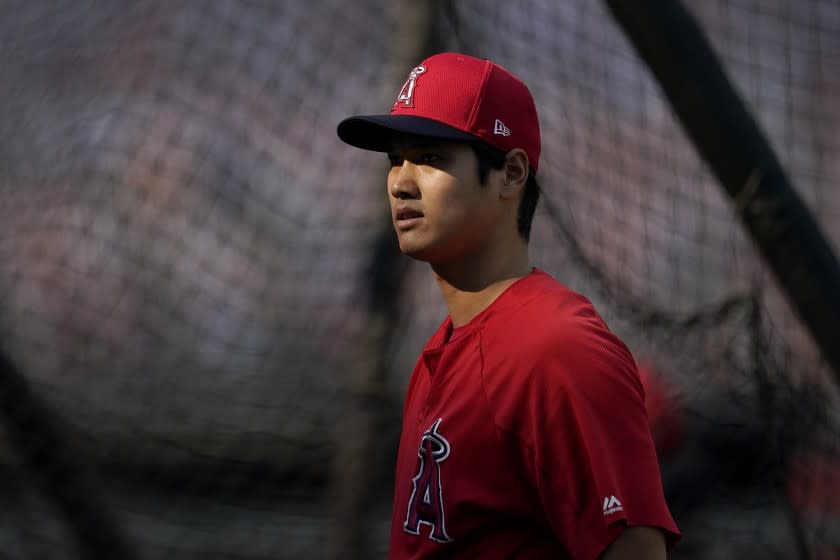Shohei Ohtani as a one-way player? The idea might be gaining some steam

The Angels are not ready to give up on Shohei Ohtani’s bid to remain a two-way player despite a series of elbow injuries that have limited the right-hander to 12 starts on the mound in his first three big league seasons.
But they are also open to the slugger becoming a one-way player, an idea that gained some steam this week when Ohtani, who suffered a forearm strain on Aug. 2, took fly balls in right field and ground balls at first base during batting practice in Minute Maid Park in Houston.
“It’s just a practice thing for him right now,” manager Joe Maddon said before the first game of Tuesday’s doubleheader against the Astros. “But you can see how proficient he is at it.”
Ohtani’s arm injury will relegate the left-handed-hitting slugger to designated hitter for the rest of this season, but Maddon believes the 26-year-old will benefit from some extra work in the outfield and infield.
“If you’re a young man like that, and all you’re going to do is swing the bat, that can get kind of boring,” Maddon said. “I’d like to see him diversify a little bit, and I think practicing like that will actually help him in the batter’s box.
“He does not need to just sit around and hit. He needs to move around a little bit, and you can see how well he does move around. The ball into the right-center field gap, he runs so perfectly and easily. It’s fascinating.”
Ohtani, who entered Tuesday with a .172 average, .641 on-base-plus-slugging percentage, five homers and 14 RBIs in his first 22 games, spent five years as a two-way player for Nippon Ham in the Japanese Pacific League.
He played 57 games in right field and seven in left field in his first two seasons — 2013 and 2014 — but he never started a game in the outfield.
Maddon believes Ohtani, with his athleticism, strong throwing arm, above-average speed and long-and-lean, 6-foot-4, 210-pound frame, would have no problems transitioning to the outfield in the major leagues. Or even the infield.
“He can play anywhere — he’s that good,” Maddon said. “He’s starting to get more comfortable in batter’s box … and we’re also seeing that he’s capable of playing any outfield position, I think.”

